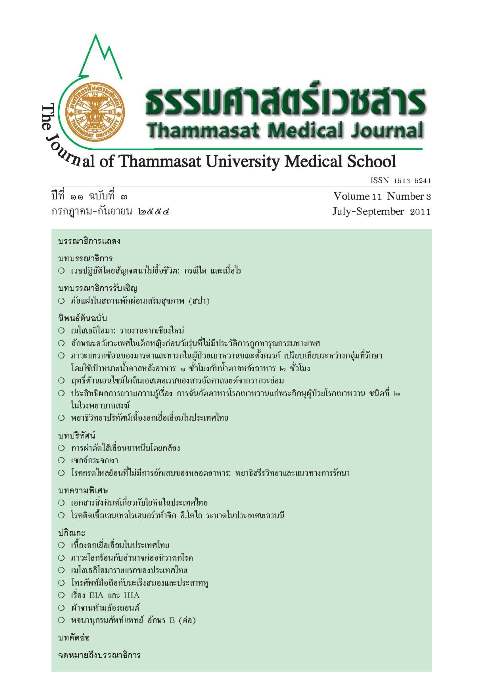The Development of a Dengue Hemorrhagic Fever Prevention Model using Strategic Route Map
Keywords:
การมีส่วนร่วม, การป้องกันและควบคุมโรคไข้เลือดออก, แผนที่ทางเดินยุทธศาสตร์, จังหวัดนครศรีธรรมราช, diseases prevention model, Dengue Hemorrhagic Fever, Strategic Route Map, participatory modeldevelopment in communityAbstract
This applied participatory action research was aimed at developing a Dengue hemorrhagic fever prevention model employing Strategic Route Map technic in tandem with actual context and causes. The seven steps of strategic route map were introduced to 60 participants inclusive of community members, community health network group, the Sub-distric Administrative Organization members in Tharua community and medical students undertook participatory workshops, training, brainstorming, group discussion and evaluation during November 2010 – August 2011. The method employed included questionnaires, observation, interviewing, focus groups and evaluation indexing of mosquito larvae and number of cases. Data analysis employed percentage, mean, standard deviation and independent t-test.
The results were that the community lacked understanding and prevention behavior of DHF before entering the program of strategic route map for DHF prevention has shown a statistically signifi cant increase in community’s knowledge and prevention behavior of DHF (p < 0.001) ; the high level of community participatory score was 74% and the development of long-term and short-term DHF prevention strategies and action plans were set up. Tharua Subdistric Administrative Organization could submit the Strategic Route Map to National Health Security Local Fund and follow-up with strategic and action plans. Conse quently, the mosquito larvae index and number of DHF casesin Tharua community continued to decrease comparative to previous years. Hence this study would be employed to develop community and co-operation among community leaders, health care providers, health network groups and Sub-distric Administrative Organization and this DHF prevention model may be effective in empowering people to collectively plan solutions to community problems.
Key words: diseases prevention model, Dengue Hemorrhagic Fever, Strategic Route Map, participatory modeldevelopment in community


